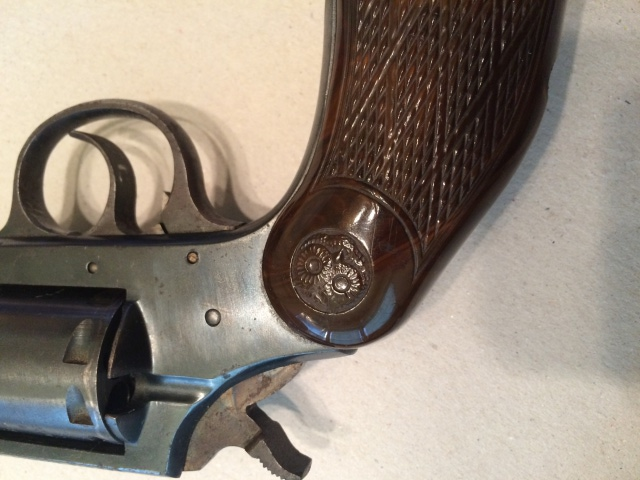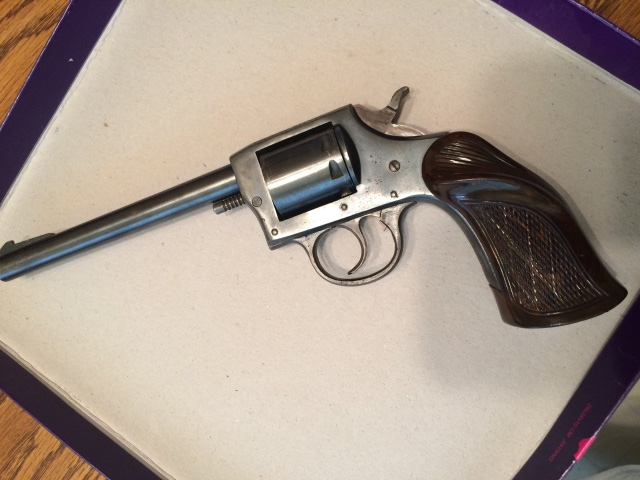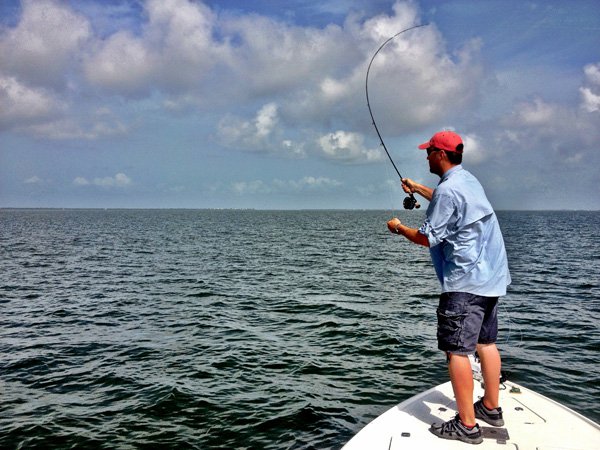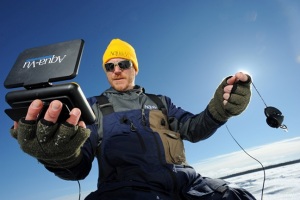Question Grip
Grip
 IVER JOHNSON MOD.55
IVER JOHNSON MOD.55
QUESTION: I recently inherited an old Iver Johnson .22 Target 8-shot revolver, Model 55, PAT. PEND. I'll quote exactly what is stamped on it here. "IVER JOHNSON TARGET MOD.55 PAT. PEND." , on top side, then on other top side stamped is, "IJA & C. WKS. FITCHBURG, MASS U.S.A."
On the underside of the trigger guard is this letter/number, "C9442". I'm curious as to what year it is from, and an approximate value, which I do understand value also takes into consideration it's condition, which I do have some photo's of it and I'm including a couple of the photo's.
I am thankful and grateful for any info. you may have on this.
Thank You,
Penny
ANSWER: Hello Penny.
Your Model 55 was manufactured from 1955-57/58. The grips were a plastic type known as Tenite. Very nice revolver. I have seen these sell from $100-$175, depending on condition. With the recessed cylinder face, it was considered safer than either Colt or Smith&Wesson. I hope this answers your questions. Thank you for asking for me. Charles Gage
---------- FOLLOW-UP ----------
QUESTION: Mr. Gage,
Thank you very much! You answered with exactly what I wanted to know and then some. Very interesting. I do however have another question for you. What is that little wedge shaped piece of metal on the trigger guard that sets behind the trigger, and slides in and out very easily? It doesn't seem to have a purpose. My son who is an Iraq veteran, knows quite a bit about guns of all kinds, not only because of what he learned in the mitary, but also being an avid collector as well. Yet he has no idea what the purpose is for that moving part. He looked all over it for a safety, thinking maybe that could be how a safety would unlock it. But found no safety on it, and found it didn't seem to do anything while firing it. ( it baffles him and he doesn't give up until he can either figure it out on his own, or find someone that knows).
Thank you very much for all of your information that you've already given me!
Penny
AnswerHello Penny.
Yes, that part is called the 'Single Action Sear'. It's function is to catch on a notch in the hammer, when manually cocking the revolver, to hold the hammer back until you pull the trigger. It is held in the hammer notch by a small coil spring. The trigger must be pulled completely to the rear to depress and, thus, disengage the sear, allowing the hammer to fall and fire. A similar device, some external and some internal, is still used on most all firearms for single action control today. Even the firearms your son used in Iraq (sear disconnected internally=full auto fire, sear connected= single fire. These options were connected to a 'select fire' switch of some type.)
I hope this is clear enough to describe the purpose of this very small, but very necessary part, in your revolver. If you need more information, feel free to contact me anytime. Charles Gage




